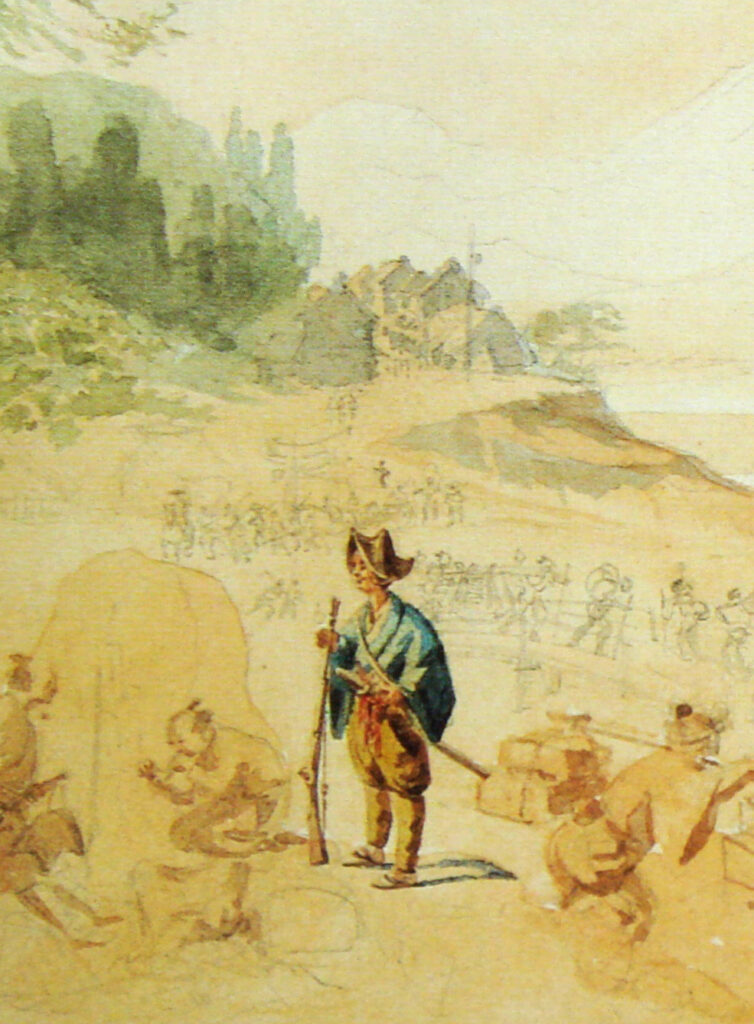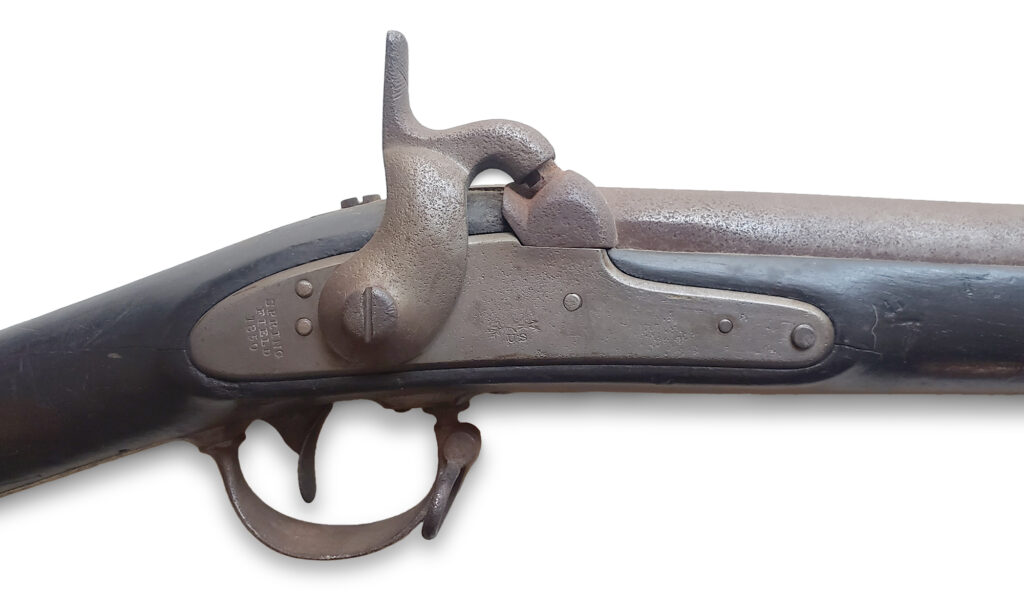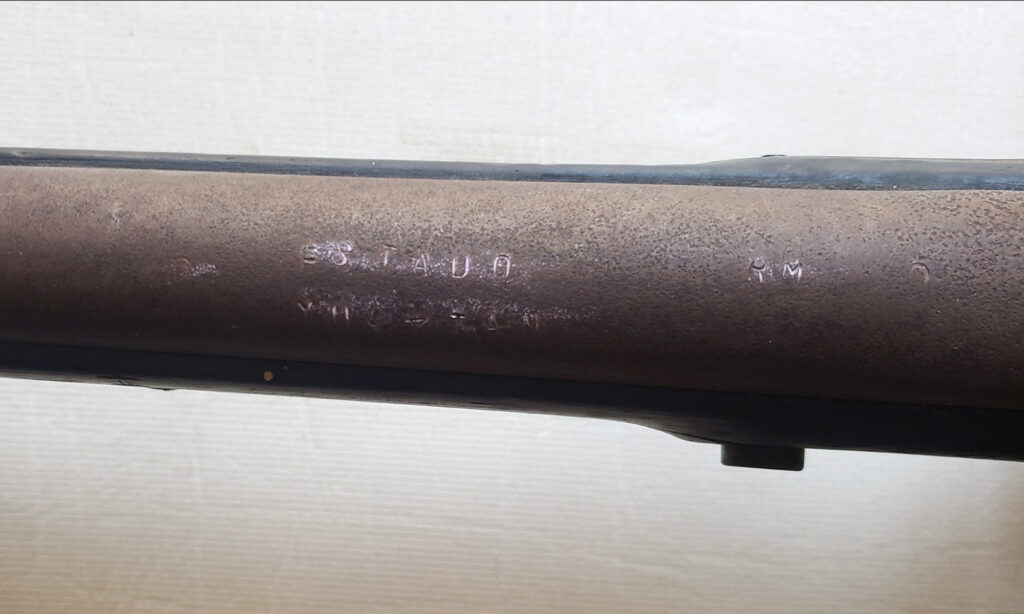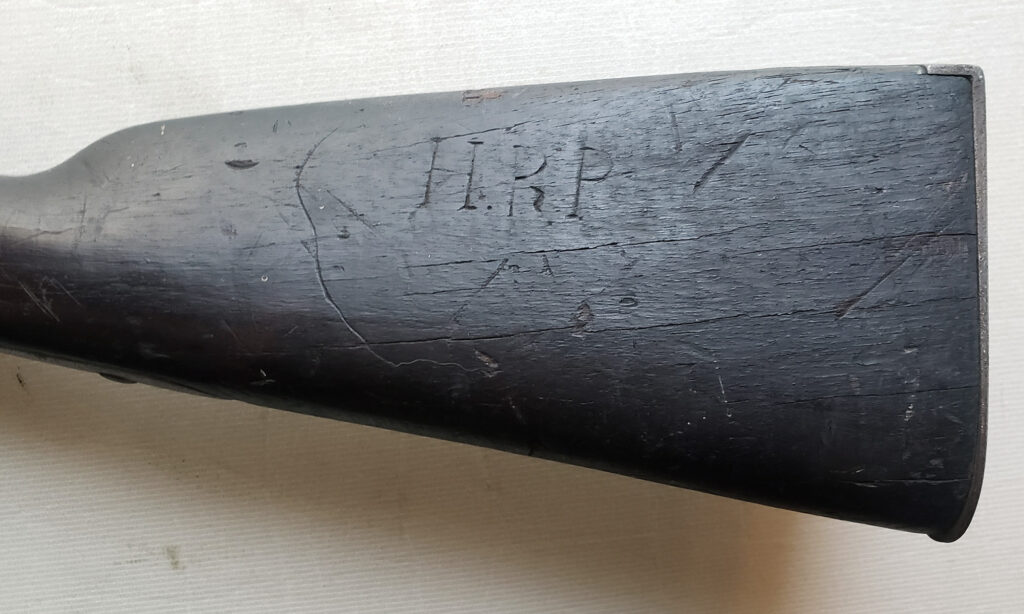Among the most widely used and distributed percussion muskets, the Springfield Model 1842 was the last .69-caliber smoothbore arm issued to the U.S. Army. Some 275,000 rolled off the assembly lines—172,000 from the namesake federal armory in Springfield, Mass., another 103,000 from the armory in Harpers Ferry (in present-day West Virginia). Between 1856 and ’59 armorers at both locations rifled the barrels on 14,182 Model 1842s for use with conical bullets and fitted some 10,000 of them with long-range rear sights. It was the first U.S. musket produced with a percussion lock. Its effective range with any accuracy was limited to 100 yards, though with a stout enough powder charge it remained lethal out to 300 yards.

The Model 1842 remained in production from 1844 (when adopted by the U.S. military) to ’55 (when supplanted by the Model 1855, a .58-caliber rifled musket). The Palmetto Armory in Columbia, S.C., produced 6,020 Model 1842s for that state’s militia and use by antebellum federal troops. They were finished in an arsenal bright (with no browning or bluing), and many have transitioned to a speckled brown patina over time. During the 1846–47 Mexican War the Army issued troops the Model 1842 and other .69-caliber muskets, including the Springfield Models 1816 and ’22, most in their original flintlock configuration, though some had been converted to percussion. At the outbreak of the Civil War thousands of Model 1842s were in storage in Southern armories, thus Confederate troops also used them in substantial numbers.
After the war the government sold many such muskets (issued by B. Flagg and A.H. Waters as well as the Palmetto Armory) surplus at fire sale prices, and many westbound settlers purchased them. Celebrated New York City arms dealer Schuyler, Hartley & Graham sold thousands of Model 1842s in Latin America as well as in China through Hong Kong dealers. The American Trading Co. sold examples to various Japanese clans during the 1868–69 Boshin War (aka Japanese Revolution).
From 1871 to ’76 the Mexican government also purchased many Model 1842s. The one detailed below was one of 600 sold to Mexico in the spring of 1875 and issued to various state militias. Its barrel features the signature speckled surface patina, while its walnut stock shows light splits caused by temperature changes and irregular oiling of the wood. The barrel is crudely stamped Estado Yucatán with an adjacent RM, for República Mexicana. The lock plate is stamped 1850 and was made in Springfield, while the rear upper breech plug is stamped 1848. It was first acquired in the late 1940s from an individual whose ancestor, a Mexican bandido, participated in the infamous Dec. 4, 1875, attempted robbery of the entire town of Campo, Calif. That bandido had his neck stretched from a tree not far from the original trading post, yet his smoothbore somehow remained in the family. The initials on the stock are attributable to either U.S. soldiers or those issued the arm in Mexico. Yours truly acquired it from Jim Masterson, a lifelong collector who through the 1950s and ’60s discovered dozens of such military and civilian arms in Mexico.



Often in cut-down versions the Model 1842 saw use in two major American wars, south of the border and in other hot spots around the world. It remains highly collectible. Since the mid-2000s Dixie Gun Works has imported an Italian-made reproduction Model 1842 for Mexican and Civil War re-enactors, shooters and collectors. Over the decades several originals have turned up as relics in the former Comancheria of the Texas Panhandle, some decorated with tacks in typical Indian fashion.






